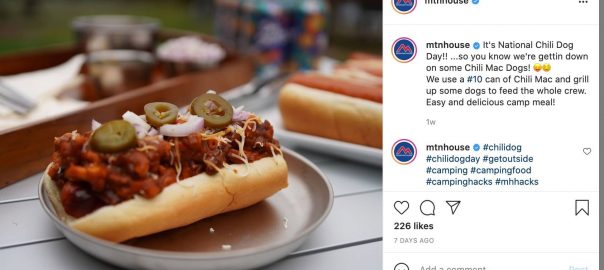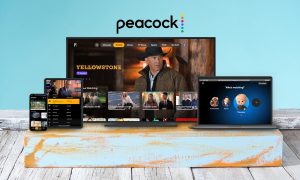90% of Instagram users follow at least one business account and 83% of people discover new products through their Instagram feed.
Amassing a large following on Instagram can help you at every stage of the marketing funnel—from bolstering brand awareness to driving conversions.
In this post, we’ll walk you through how to use Instagram to get in front of more people and incentivize them to become engaged followers.
7 principles to effectively grow your Instagram following
The principles you are relying on to get more traffic, conversions, and sales on your website are the same ones you should use for your Instagram accounts.
This article assumes you:
- Already deeply know your audience and have conducted research to understand what types of posts will resonate with them
- Have a solid brand messaging strategy in play, so you can emulate relevant, customer-centric content on social
- Have clearly defined goals tied to measurable metrics (e.g. how many follows you want to gain in a month or quarter)
- Post consistently (or have curated a plan to) with a detailed content calendar
We also do not recommend buying followers (if you do, reconsider). This tactic is a surefire way to sabotage your Instagram growth long-term. Spending $ 10-$ 25 to acquire 1,000 followers sounds good, but the benefits stop at perceived value. Here’s why:
- Your Instagram account could get banned: Instagram looks down on fake accounts, bots, and any account that relies on them. At the minimum, you can expect that Instagram will suspend all of your bot and fake followers over time. If the percentage of real to fake followers is too skewed, they’ll likely penalize or ban your account as well.
- Your Instagram performance metrics will suffer: Fake followers and bots don’t like, comment, or view your posts after your initial purchase. This means that your post and story engagement ratios will decrease dramatically. When your engagement drops, you’ll lose organic reach on all of your posts.
- You’ll lose credibility: It is easy to tell if an account is buying followers. A tool like HypeAuditor lets you see the percentage of real to fake followers. You could also figure it out for yourself by looking for telltale signs, like low engagement rates on posts for the account size or segmenting followers with incomplete profiles or who only engage on posts in short bursts.
- You could be a victim of identity theft: Most of the businesses that sell Instagram followers or engagement are fly-by-night operations. They set up shop, make a lot of money, and then shut down before they get caught. These businesses will have access to your Instagram account and credit card details. Best case scenario, you buy your followers, and nothing happens. Worst case scenario, they steal your identity.
1. Humanize your brand
It is tempting to hide behind your logo and share overly-polished corporate highlights. The brands that have the most success do the opposite. They find ways to build authenticity and cultivate connection by sharing their brand’s story consistently.
Take UK fintech brand Tide. They consistently post stories that take you behind the scenes at their London HQ:
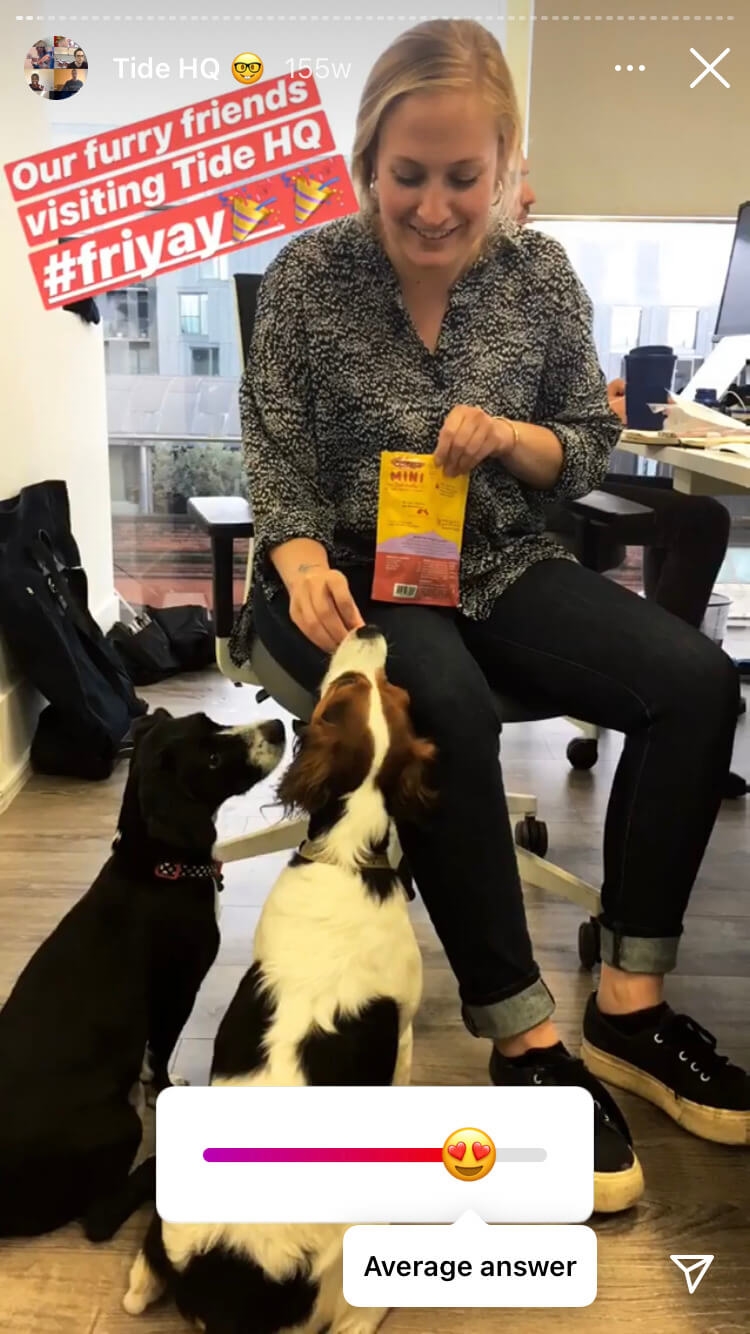
Each story gives you a sneak peek at their fun-loving, all-inclusive culture:
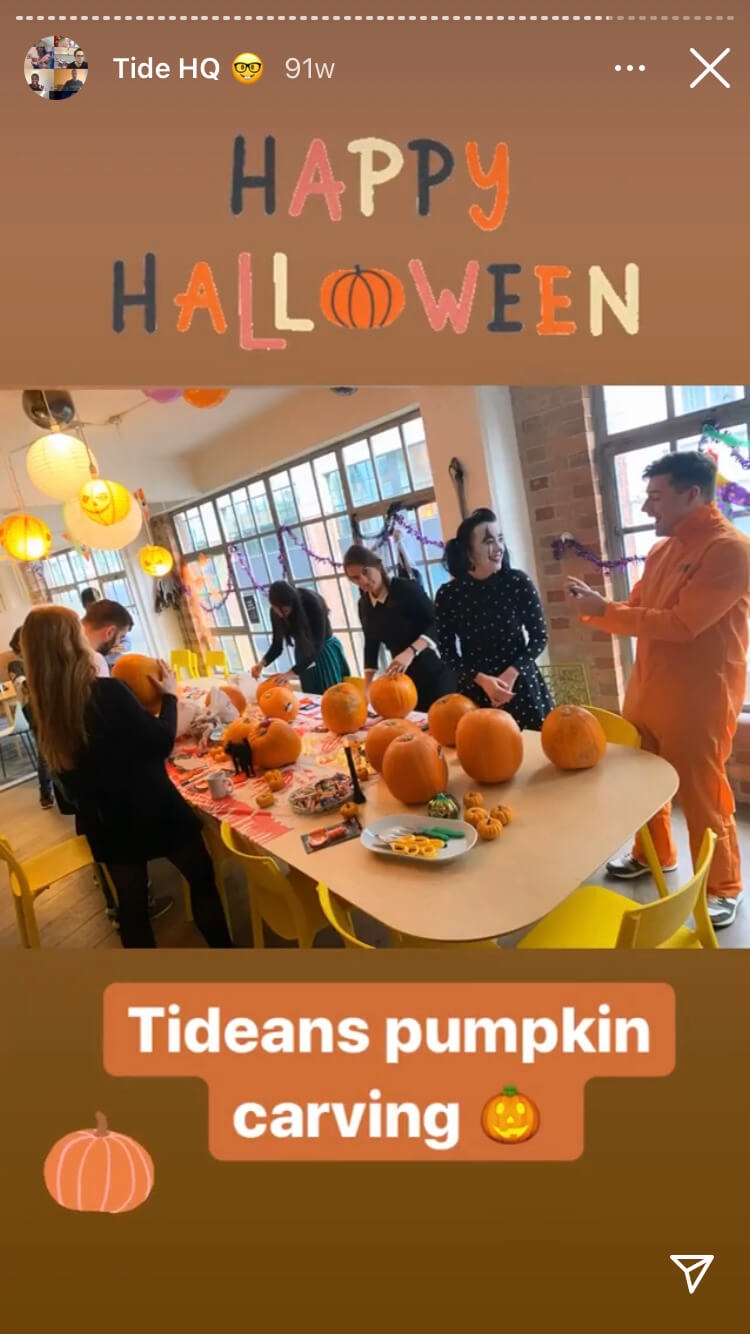
These stories show Tide’s employees engaging in commonplace, relatable activities—feeding treats to dogs and dressing up for Halloween. They also take a stance on important societal issues, such as mental health awareness:
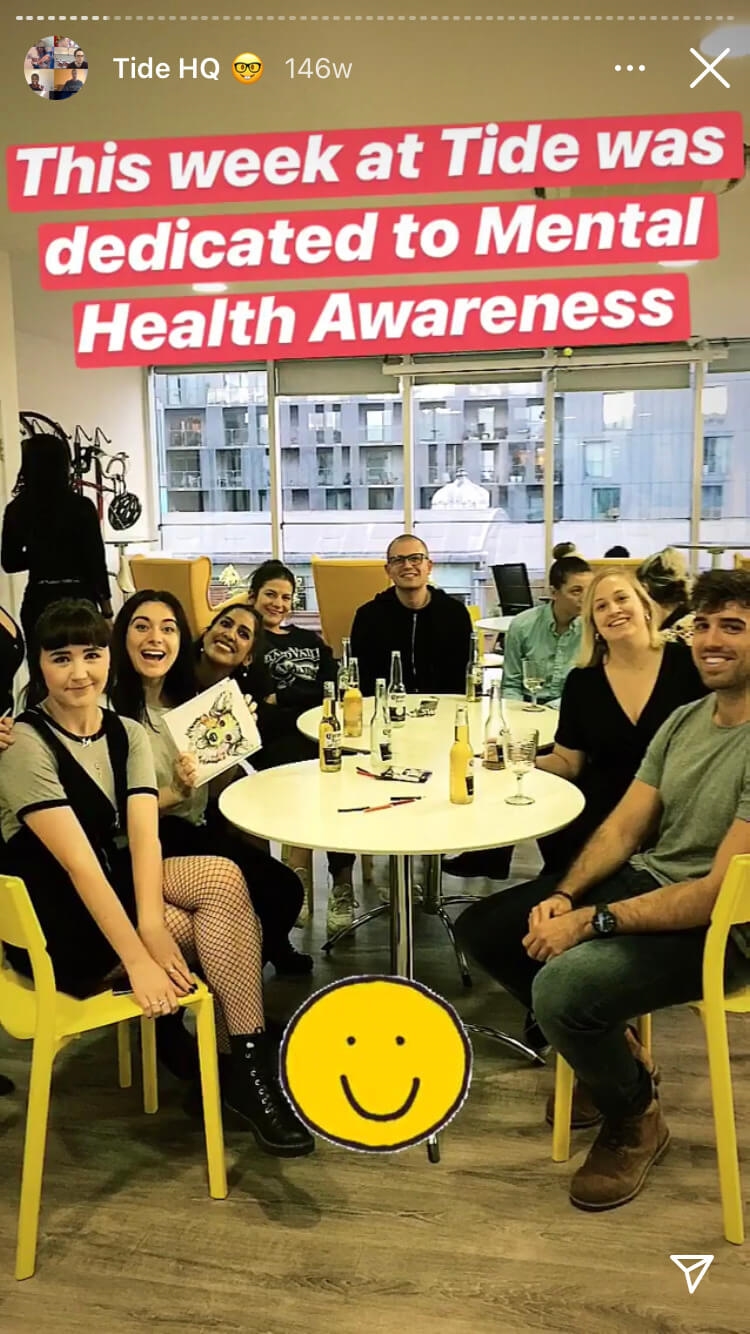
These pictures speak a thousand words. The culture they foster is entrepreneurial and community-driven—traits that are reflected in their startup and small business target audience.
They also prioritize the “work hard, play hard” mantra, which is a mindset shared by many entrepreneurs hustling to bring a new idea to market and scale. But they also recognize the need to prioritize mental health in order to avoid burnout, among other side effects, which 52% of employees report experiencing.
You don’t have to scroll far to note that their overall messaging is skewed towards side-hustles and small business owners:
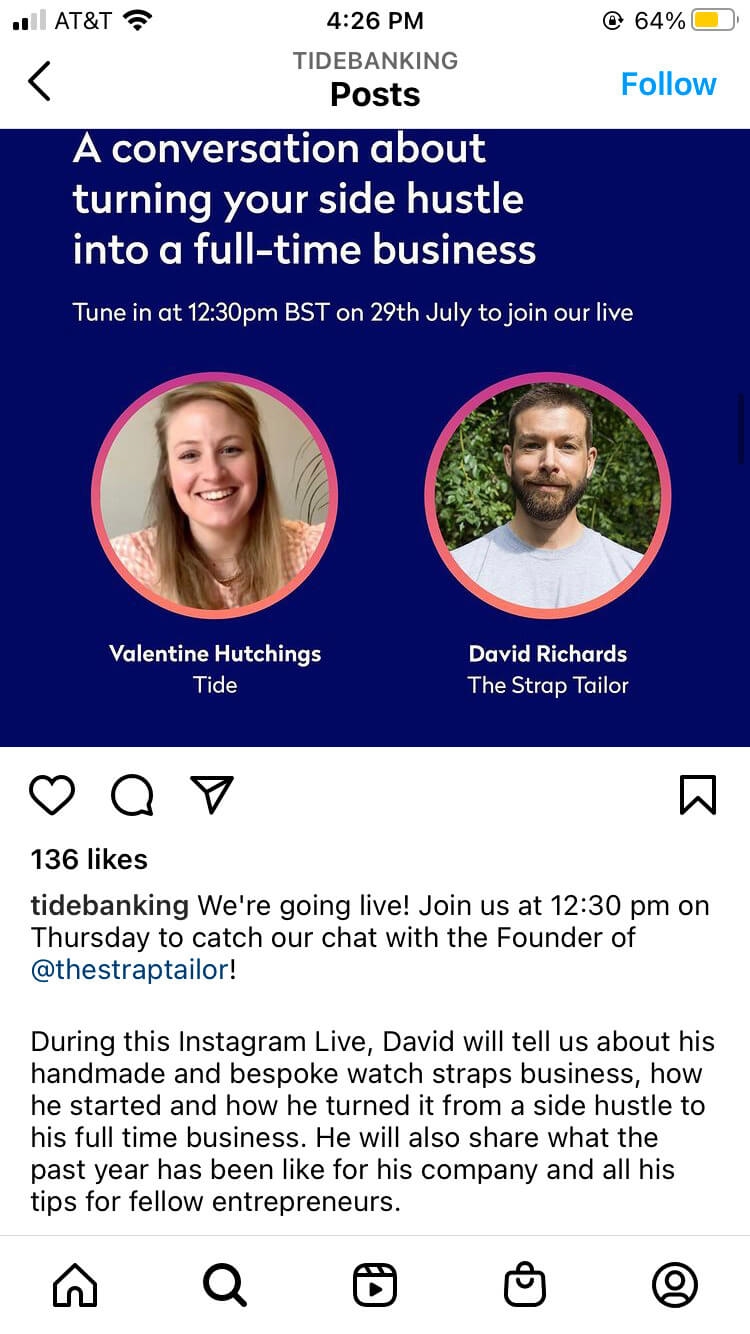
By showcasing their employees engaged in non-work activities, they open the door to building deeper connections with their target audience and demographic. We’re intrinsically wired to connect with one another, and understanding the importance of these social bonds is a surefire way to drive engagement and loyalty.
Here are a few takeaways that you can learn from successful Instagram accounts like Tide:
- Remember to be “social”: Respond to comments and direct messages from followers in a timely manner. You’ll build relationships faster and gain a better understanding of what posts resonate.
- Share behind-the-scenes takes: As noted with Tide, showing the human side of your team makes your brand more relatable, which is a key part of captivating your audience while also sharing what makes you unique and different.
- Share your story across different mediums: Leverage all of Instagram’s post formats to share your story (Instagram photos, Stories, Instagram Reels, Live Video, and IGTV). When it makes sense, adopt new features early on as the Instagram algorithm has been known to prioritize that content in people’s feeds.
2. Keep your brand messaging consistent
No matter what you post, or when, it needs to be easily recognizable and consistent. Whatever makes your brand stand out and differentiate, use that on Instagram, too.
A consistent brand messaging strategy:
- Focuses on what sets you apart
- Does not try to appeal to everybody
- Speaks directly to your audience (in their voice and to their intent)
The more consistent you are with your messaging and brand, the more it will resonate with your followers (and attract new ones). Consistency also promotes habit building. Partial habits take 25 days to build, and full habits take 50-60 days:
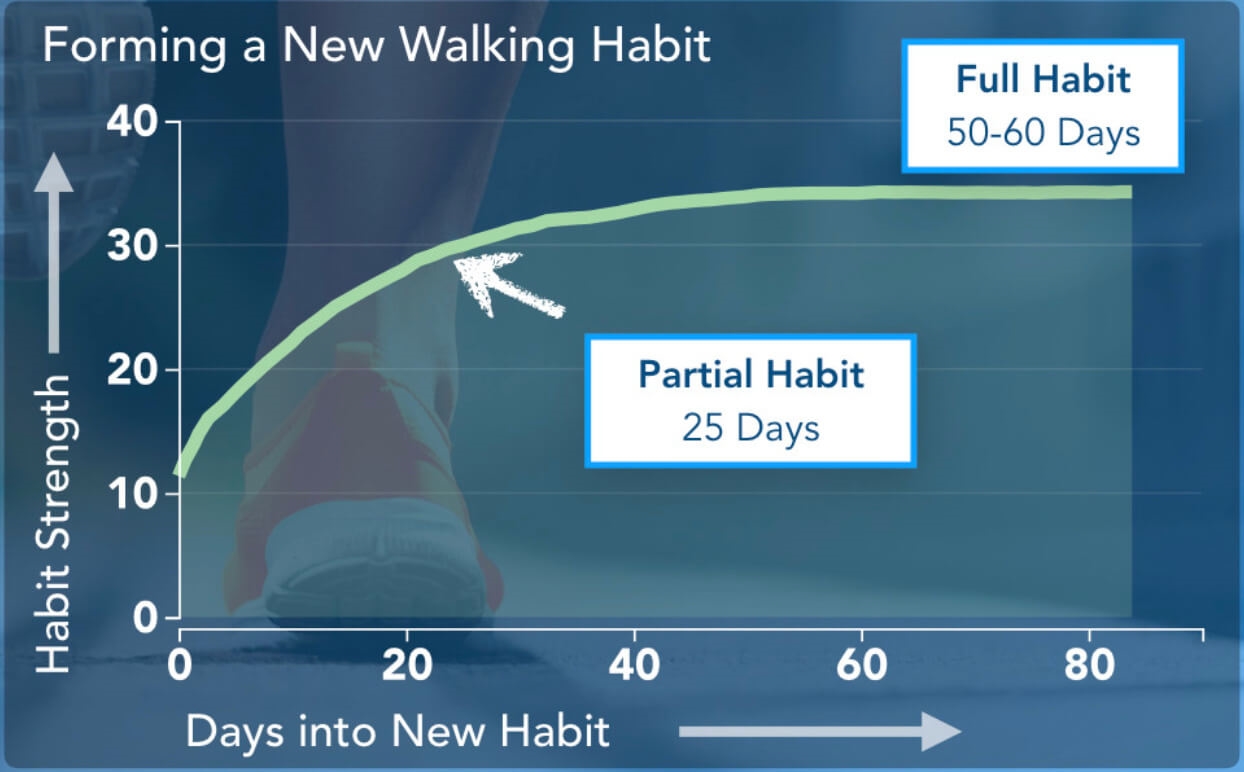
For example, if you post about a similar theme (like mental health awareness) at the same time on the same day each week, your audience will come to expect that. Building habitual anticipation is a great way to boost awareness and engagement, as it’s easy for followers to develop a habit of checking in, especially if it’s on a topic they care about.
SaaS company BigCommerce does this well. Before every holiday, they highlight unique brands on their platform selling gift ideas:
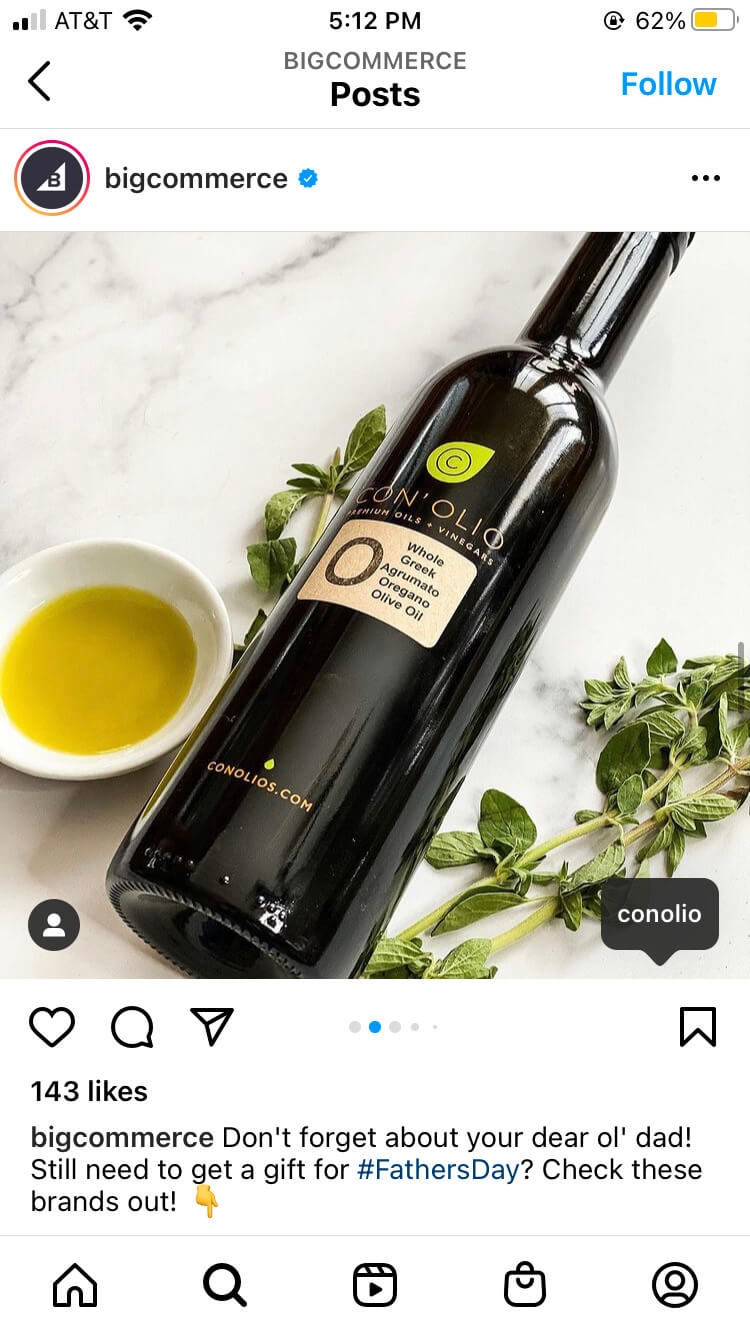
Here are their posts for Father’s Day and Mother’s Day, respectively:
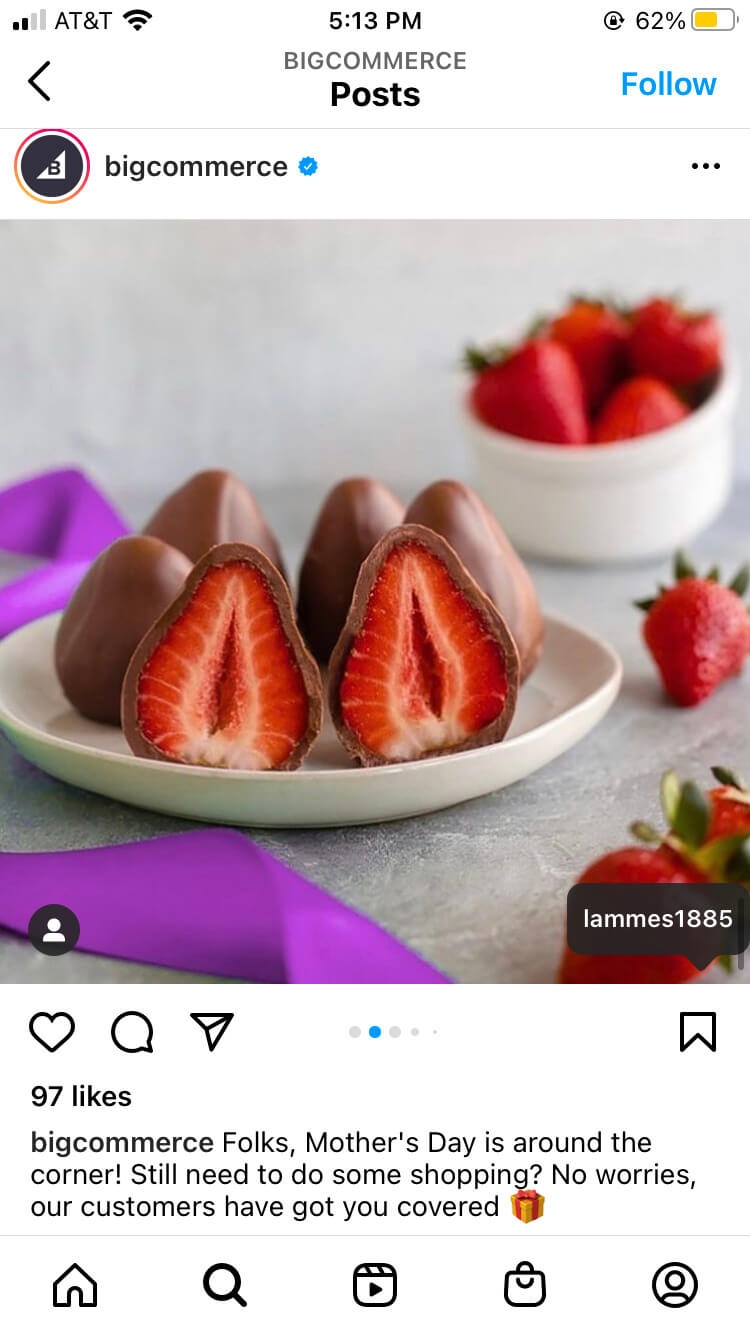
This consistency makes it easy for their audience to anticipate and appreciate gift idea posts.
And in turn, engage with their platform on highly competitive ecommerce shopping days.
3. Curate content for each stage of the marketing funnel
Besides consistent, high-quality brand messaging, you need a wide array of Instagram content to speak to every customer touchpoint. Use your customer journey map to inform your strategy.
One B2B brand that does this well is social media scheduling platform Later. In this meme, they share educational content that helps social media managers do their job better:
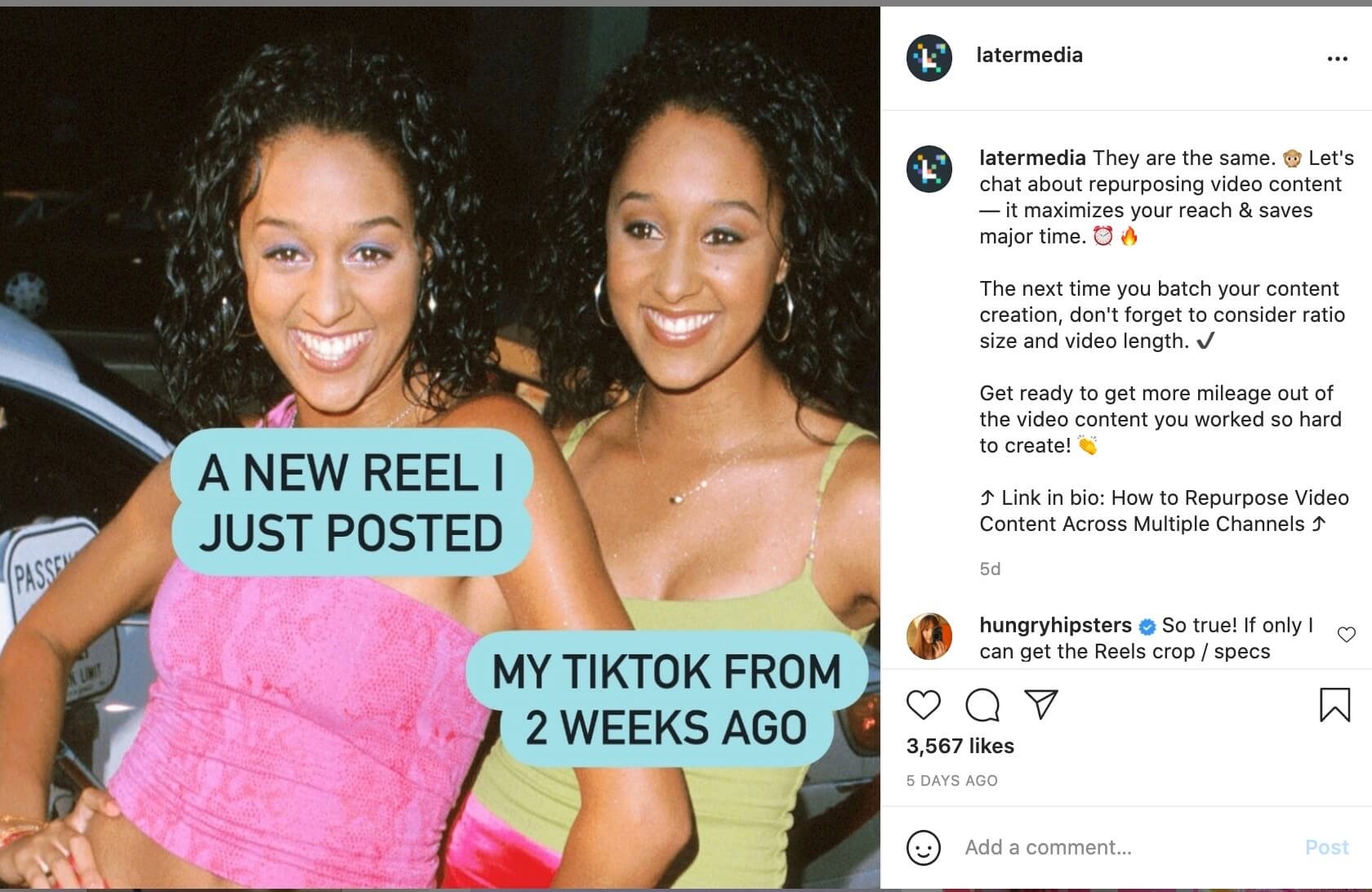
It’s relatable, prescriptive, and not overly salesy. Because it’s general in nature, it appeals to existing customers looking to improve their content creation strategy, as well as top-of-funnel prospects curious about how Later can help them improve.
In another example, they highlight a platform-specific feature that appeals to bottom-of-funnel consideration prospects, as well as existing customers looking to level up their game:
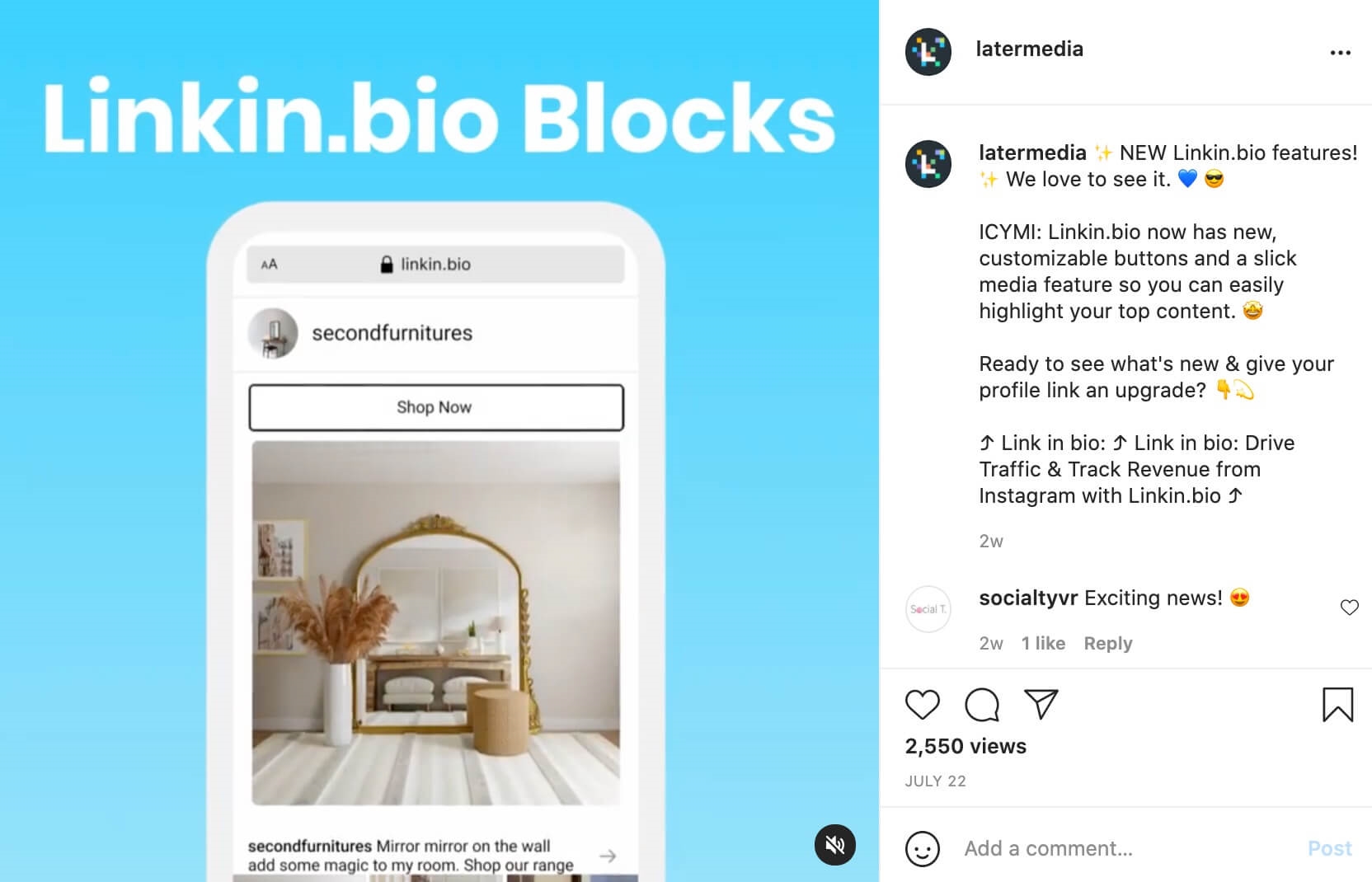
By releasing product updates on Instagram, you expand your cross-selling and up-selling opportunities to potential customers on the edge of making a purchase as well as existing customers eager to take advantage of your latest offerings.
4. Leverage influencers to expand reach
The influencer marketing industry is worth more than 9.7 billion dollars. Partnering with the right influencers can help boost awareness and lead to more sales.
One DTC brand that does influencer marketing well is meng’s grooming company Beardbrand. At any given time, they partner with several micro-influencers in the men’s beauty and fashion niche:
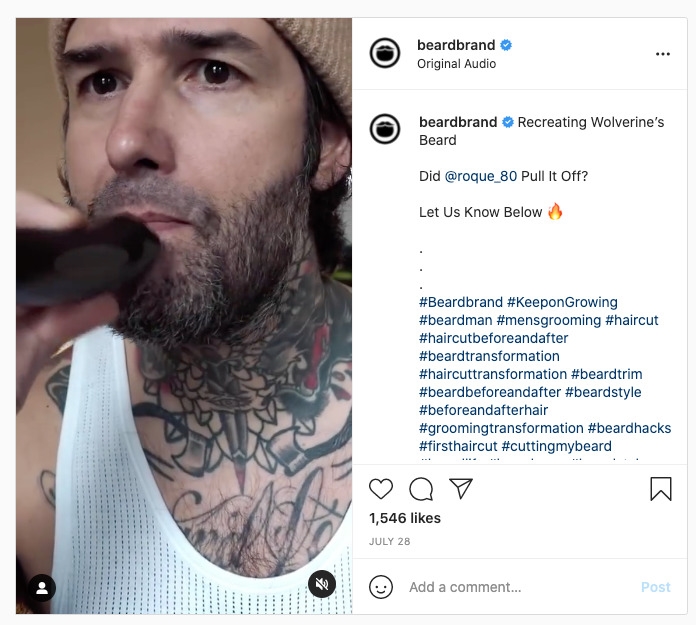
In the Reel above, they partnered with a men’s fashion blogger who shares how he recreates a specific beard style. This partnership makes sense since it is aligned with Beardbrand’s products, and helps Beardbrand tap into a like-minded audience that was previously beyond their reach.
To run successful influencer marketing campaigns on Instagram:
- Don’t obsess over follower counts: Unless you have a nearly unlimited marketing budget, it pays to focus on niche micro-influencers (i.e. influencers that have anywhere from a few thousand to a million Instagram followers). It is tempting to work with an influencer with 25 million followers, but it will cost a lot more, and often the influencer has lost direct touch and access with their fans.
- Find influencers that resonate with your audience and align with your brand’s values: Before you reach out, do your homework. Look at their post history, follower list, engagement ratio, and any other brands they’ve highlighted on their account. For example, if your brand is big on sustainability, you don’t want to partner with an influencer who is promoting muscle cars and pick-up trucks.
- Be aware of influencer fraud: This is a growing problem. Some influencers will inflate their stats by buying followers or creating fake brand deals on their accounts.
- Start small: When working with a new influencer, start with a small project and measure their results. Then, keep testing results over time to maximize reach and conversions.
We take a deep dive into these best practices and more in CXL’s influencer marketing course.
5. Embrace social proof
Social proof is invaluable. It boosts authenticity, builds trust, helps proves your value, and drives decision-making.
Here are some ways to use social proof to your advantage on Instagram:
User-generated content
UGC works well because it shows real customers using your product or service. This helps potential customers see if a product is for them.
This can range from product reviews and photos or videos of a customer using your product to more elaborate displays.
House of Wise, a luxury CBD brand, does this well through its Instagram Stories. To ensure these reviews are easy to find, they’ve added them to their Instagram Highlights:
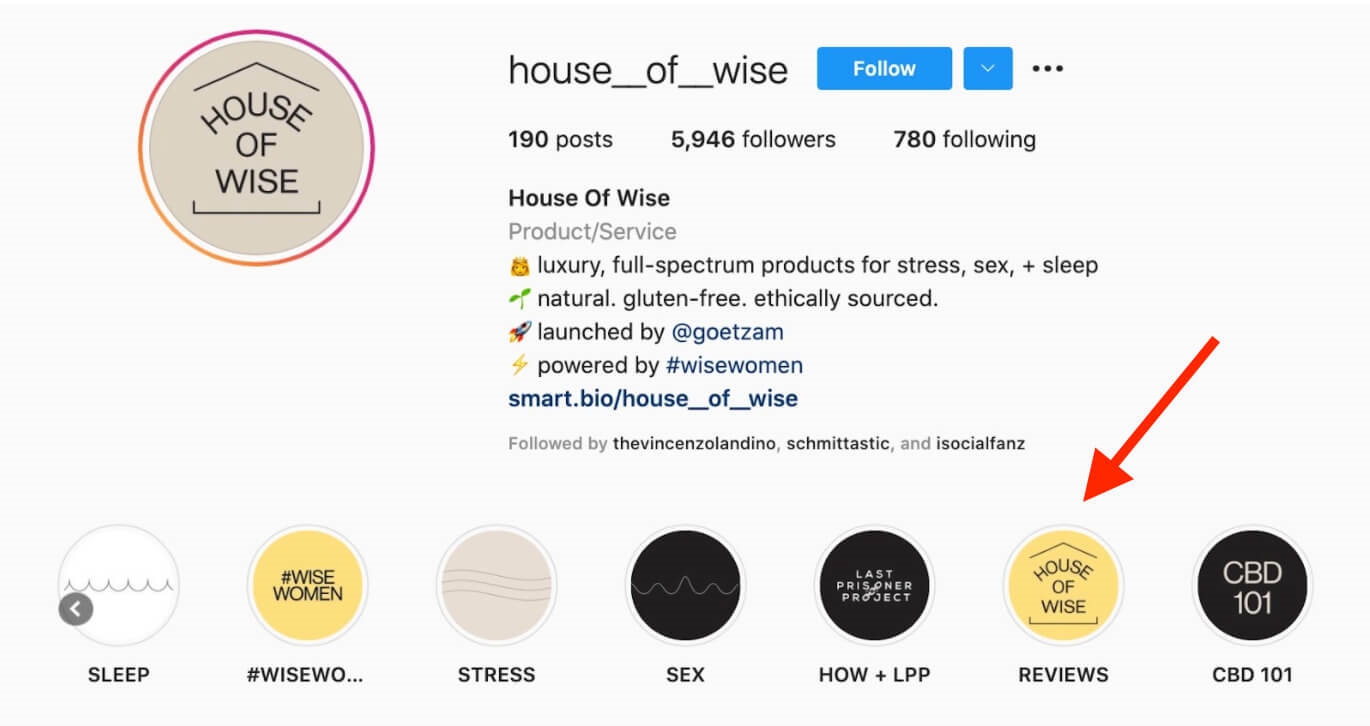
By amplifying customer’s content, House of Wise not only encourages reviewers to keep sharing feedback but also increases the reach for both accounts (a win-win).
Importantly, the customer is advocating on their behalf without an incentive, which adds authenticity to the review:
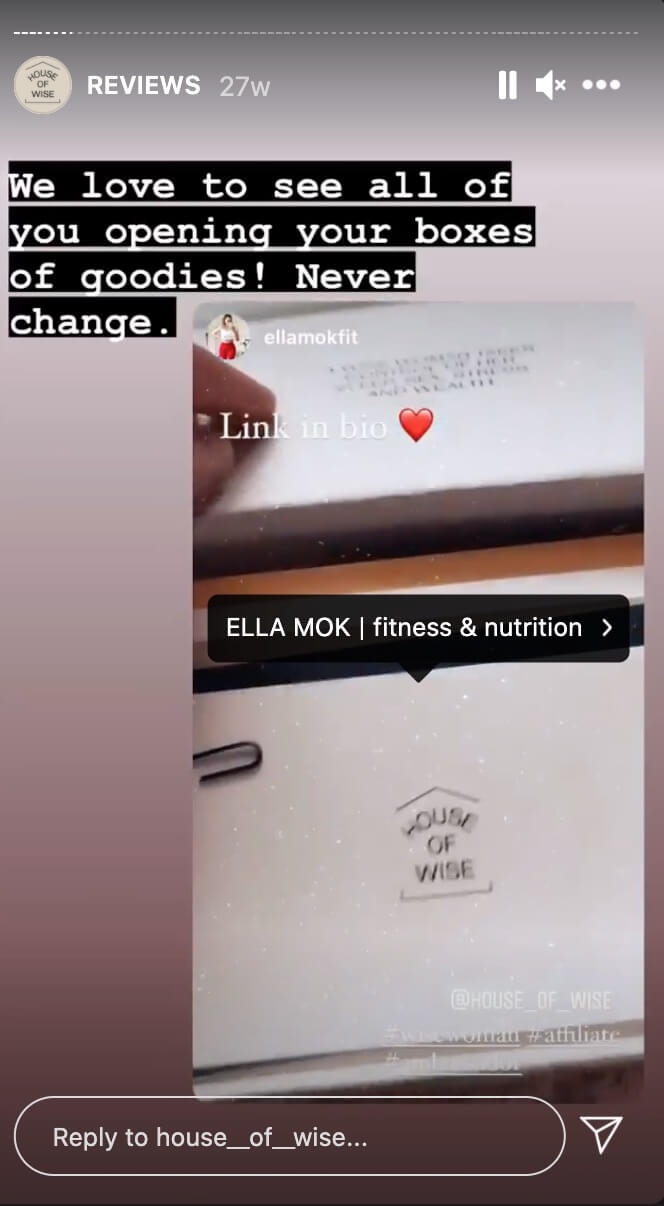
Organize a giveaway
If your offering has product-market fit and is highly demonstrative, UGC is often a natural side effect. However, sometimes you may need to incentivize customers to share.
That’s where giveaways and contests can work well. Cabot Cheese teamed up with a winery to give away a wine and cheese box to two winners in exchange for participating in this Instagram giveaway:
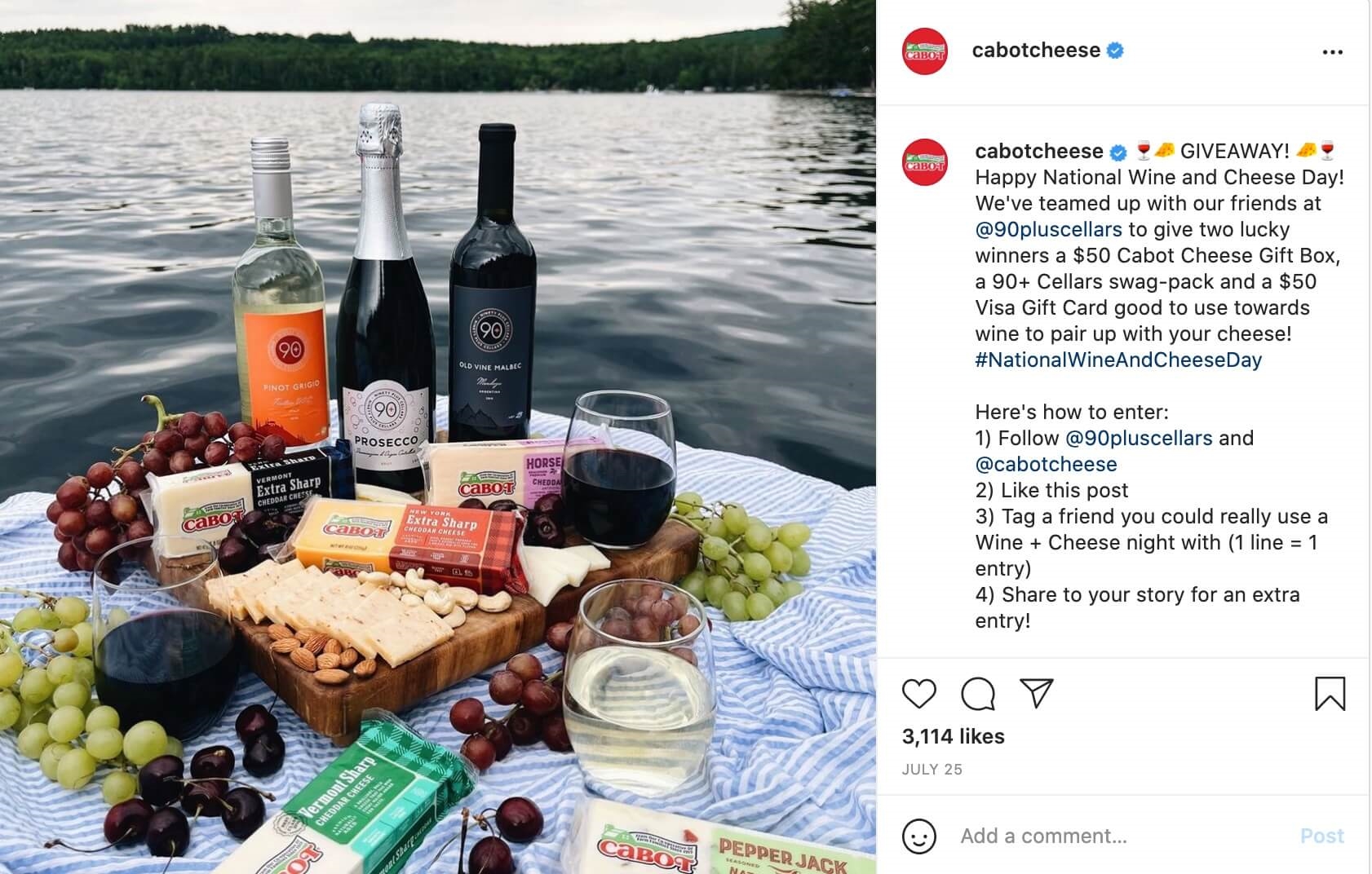
They kept the barrier to entry low without sacrificing virality. Contestants simply had to follow both brands and tag a friend in the comments to enter. This gave them more views and likes and incentivized more people to hit the follow button (it’s hard to pass up a chance to keep an eye out for a wine and cheese giveaway on your feed).
Most people didn’t just tag a friend but they also left a comment that was either funny or explained what they would do if they won the giveaway:
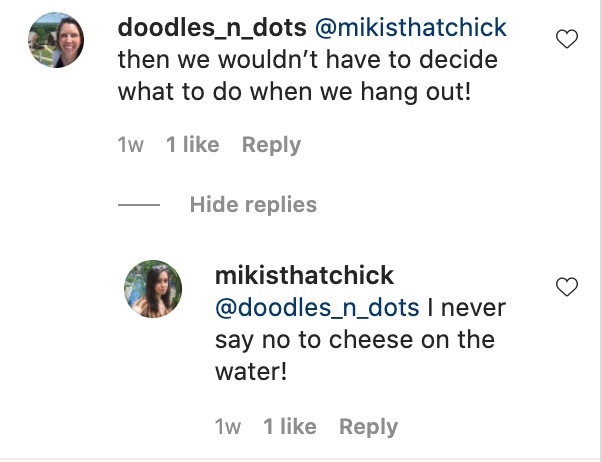
Positioned well, contests beget engagement. Once you set the ball in motion, your community will likely take hold and run with it.
Repurposed reviews and feedback
To double down on social proof, repurpose your testimonials and case studies into Instagram posts and videos.
Pipedrive does this well. Here, they share a video clip from one of their customer success stories:
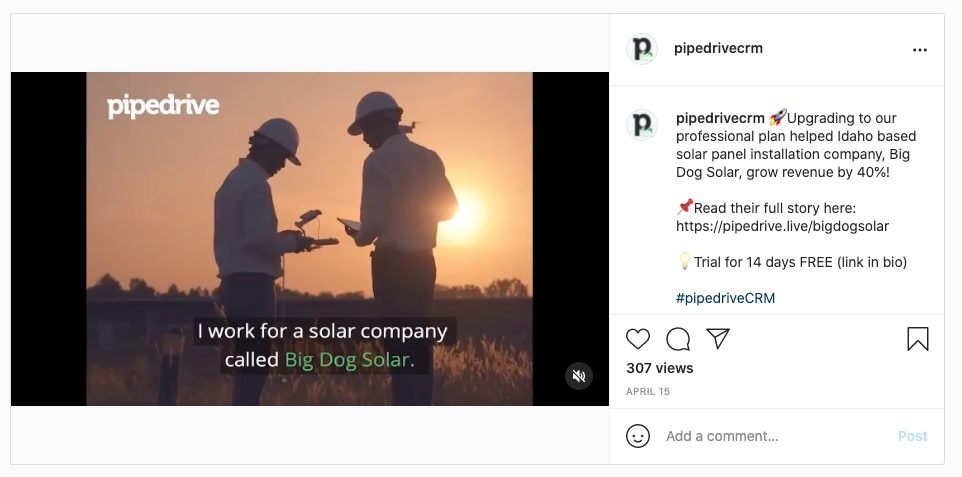
When you show real-life customers using your product, it makes it easier for prospects in that niche to see themselves using it too.
A similar company that follows Pipedrive can watch this and easily envision how their product might benefit their business. They’ll be more likely to start a free trial or become a paying customer as a result.
Display social proof in your bio
A simple way to amplify social proof is to add it to your Instagram profile bio. You can incorporate it in your bio description, your clickable link in your bio, and even create your own branded hashtags (in your bio and posts).
This is the first thing new people see when they follow your account. It is also the only clickable link that you can display on Instagram. If sales are your primary KPI, displaying social proof is a surefire way to help convert potential followers into followers and ultimately customers.
6. Use relevant hashtags (and avoid trivial ones)
Instagram hashtags have a very high search and headline presence, so including them in all of your posts is a must. They can help more people discover your content on Instagram.
But don’t go overboard. Instagram’s algorithm will see right through your hashtag stuffing attempt to get more eyeballs on your content and limit your organic reach. Not to mention, repeat offenders may get shadowbanned and have their content restricted without their knowledge.
It is best to use hashtags sparingly (e.g. no matter than 15 hashtags per post). This post from adventure meal company Mountain House is a great example of how to use hashtags well:
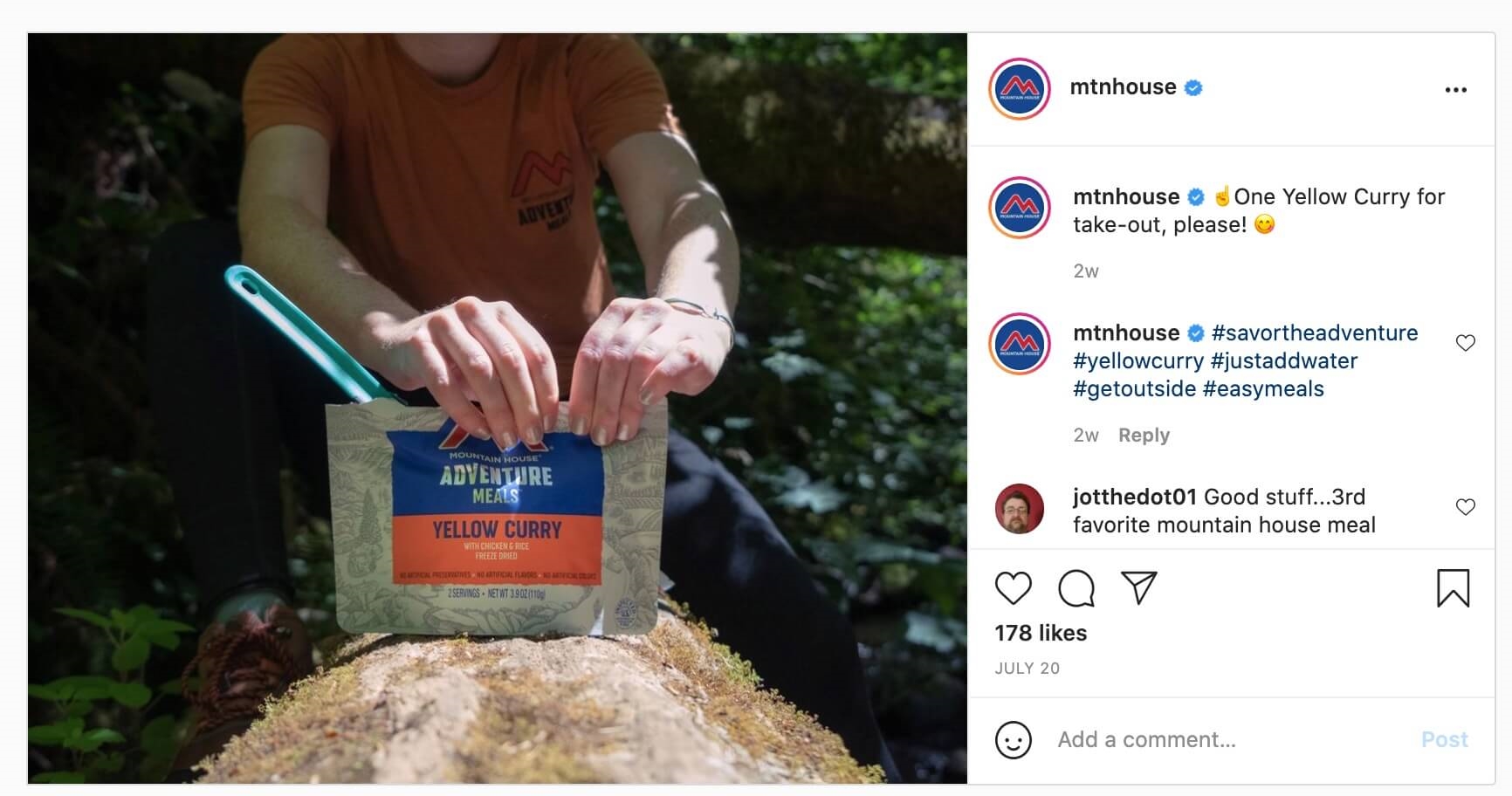
It shows a real customer cooking and eating one of their products on a hiking trip and they use a mix of popular and branded hashtags that are relevant to the post. Mountain House coined the hashtag #savortheadventure, which means anybody that searches for that hashtag will likely see their posts.
To ensure their post maximizes reach, they also use popular hashtags related to their content, like #yellowcurry and #easymeals. Both of these hashtags are popular but not so much so that it’s impossible to secure a coveted top spot.
In this example, Mountain House shares a post related to “National Chili Dog Day” and uses hashtags that are not only popular but relevant:
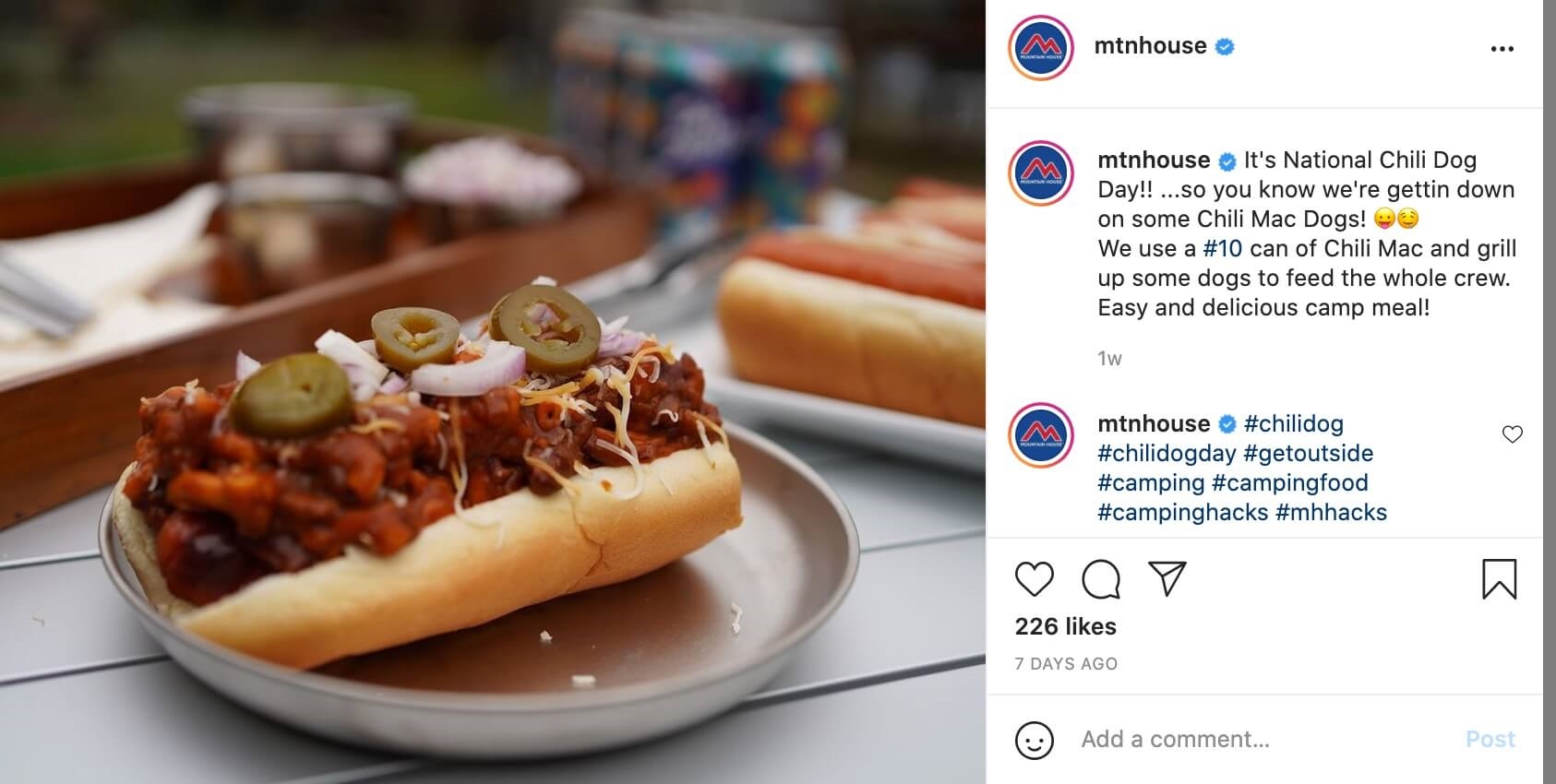
Incorporating these hashtags— #chilidog #chilidogday #getoutside #camping #campingfood #campinghacks #mhhacks feels like a natural extension of the post content instead of hashtag stuffing.
Here are some best practices:
- Include your hashtags in the first comment, not in the actual Instagram caption: This can save valuable space for longer captions. It also has a modest impact on performance and overall reach.
- Add a mix of branded and popular hashtags: Focus on hashtags that are popular but not so popular that it will be impossible to secure a coveted top spot.
- Don’t forget about hashtags with emojis: This can be particularly beneficial for niche accounts. For example, if you are a travel blogger, you might use these two specific hashtags: #travel
 and #travel.
and #travel.
Competitor analysis is also important. Look for posts that have the same style or niche as you and identify their top and worst performing posts. Note the hashtags they used (e.g. branded, non-branded, and number per post) and analyze patterns. Test on your audience to see what sticks, and optimize as needed.
Also, search hashtags on Instagram to get a better idea of which ones are popular.
Resist the urge to stuff your post with hashtags, like #cats, #dogs, or #memes that have 100 million-plus posts. Your content will wind up getting buried on the Explore page often in a matter of minutes.
7. Track your performance and optimize accordingly
Monitor and analyze your Instagram metrics on a weekly (ideal) or monthly basis. This allows you to spot patterns and trends and course correct if performance is trending down.
Here are the metrics that you should track, what they mean, and how you can use those insights to optimize your Instagram marketing strategy, post great content, and grow an engaged audience.
- Follower Count: Total number of followers
- Net New Followers: Total number of new followers added in a given time period
- Post Engagement Ratio: You can calculate this by adding up the total number of likes and comments on a post, dividing that number by the total number of followers, and multiplying by 100
- Bio Link Clicks: The number of people clicking on the link in your bio
- Post Likes: The number of likes on all of your posts
- Post Comments: The number of comments on all of your posts
- Story Views: The number of views on your Instagram story
- Story Comments: The number of DMs from real people on your Instagram story
- Story Link Clicks: If you have a swipe up link in your story, the number of people who clicked on the link
- Referral Traffic: The percentage of traffic that came to your website from Instagram
- Conversions: This will depend on your desired goal, but this is typically either sales, email subscribers, or leads that can be attributed to Instagram.
By keeping track of your Instagram analytics, you can find out what types of content work best for you and ensure that you’re getting the maximum number of new Instagram followers.
Say you run an Instagram account for an online sneaker brand. Here are some ways you can apply the metrics you are tracking to your Instagram strategy:
- A/B test different messaging and creative versions in your Instagram story. Track which version gets the most Story Views, Story Comments, and Story Link Clicks. Choose the winner and follow that template for future posts.
- Test Instagram photo post captions to track Post Likes and Post Comments. Note the format, hashtags, type of content, time of post, and so on to see which factors influence higher engagement.
- Change up your Instagram bio every now and again with relevant links. Track Link in Bio clicks and referral traffic to see which types of links drive the most engagement. Naturally, this will vary depending on your goals. If your primary goal is conversion, product-related links may perform better. If it’s qualified leads, social proof may come out on top.
Conclusion
The 80:20 of growing your Instagram account is to post quality content consistently, be relatable, display social proof early and often, and partner with influencers in your niche.
Get in the habit of tracking your Instagram metrics on a weekly basis. You’ll be able to spot patterns, which you can use to refine your Instagram strategy over time.
Digital & Social Articles on Business 2 Community
(60)
